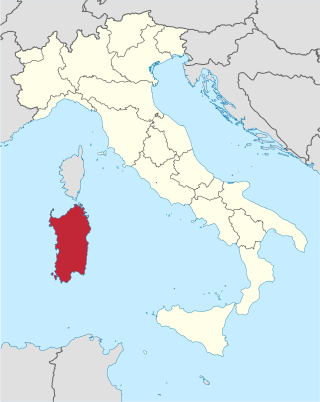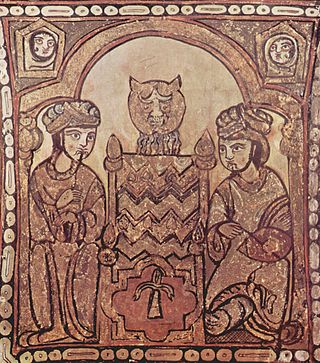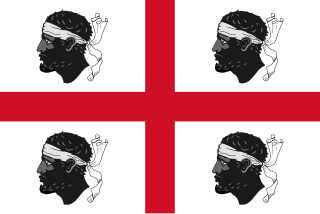
Sardinia is the second-largest island in the Mediterranean Sea, after Sicily, and one of the twenty regions of Italy. It is located west of the Italian Peninsula, north of Tunisia and immediately south of the French island of Corsica.

CostantinoNivola was an Italian sculptor, architectural sculptor, muralist, designer, and teacher.

The genus Ophrys is a large group of orchids from the alliance Orchis in the subtribe Orchidinae. They are widespread across much of Europe, North Africa, Caucasus, the Canary Islands, and the Middle East as far east as Turkmenistan.

The history of Islam in Sicily and southern Italy began with the first Arab settlement in Sicily, at Mazara, which was captured in 827. The subsequent rule of Sicily and Malta started in the 10th century. The Emirate of Sicily lasted from 831 until 1061, and controlled the whole island by 902. Though Sicily was the primary Muslim stronghold in Italy, some temporary footholds, the most substantial of which was the port city of Bari, were established on the mainland peninsula, especially in mainland southern Italy, though Muslim raids, mainly those of Muhammad I ibn al-Aghlab, reached as far north as Naples, Rome and the northern region of Piedmont. The Arab raids were part of a larger struggle for power in Italy and Europe, with Christian Byzantine, Frankish, Norman and local Italian forces also competing for control. Arabs were sometimes sought as allies by various Christian factions against other factions.

The Kingdom of Sardinia, also referred to as the Kingdom ofSardinia-Piedmont or Piedmont-Sardinia as a composite state during the Savoyard period, was a country in Southern Europe from the late 13th until the mid 19th century.

The Sardinians, or Sards, are a Romance language-speaking ethnic group native to Sardinia, from which the western Mediterranean island and autonomous region of Italy derives its name.

The genetic history of Italy is greatly influenced by geography and history. The ancestors of Italians were mostly Indo-European speaking peoples and pre-Indo-European speakers. During the Roman empire, the city of Rome also attracted people from various regions, from north of the Alps and throughout the Mediterranean basin, including Central Europe and Southern Europe, North Africa and the Middle East. Based on DNA analysis, there is evidence of ancient regional genetic substructure and continuity within modern Italy dating to the pre-Roman and Roman periods.
Platyderus is a genus of ground beetles in the family Carabidae. There are more than 100 described species in Platyderus.

Orthomus is a genus in the beetle family Carabidae. There are more than 30 described species in Orthomus.

Scaritinae is a worldwide subfamily of beetles in the family Carabidae, containing more than 2400 species in over 140 genera.
Microtyphlus is a genus in the beetle family Carabidae. There are at least 20 described species in Microtyphlus.
Winklerites is a genus of ground beetles in the family Carabidae. There are more than 20 described species in Winklerites.

Ocys is a genus of ground beetles in the family Carabidae. There are at least 30 described species in Ocys.

Duvalius is a genus of beetles in the family Carabidae. They are distributed from the Mediterranean area to northwestern China. They typically live in caves and in shallow subterranean spaces. Many species are rare and have very restricted distributions.
Brachinus psophia is a species of ground beetle from the Brachininae subfamily that can be found in Bulgaria, Greece, Italy, Albania, Austria, Czech Republic, France, Hungary, Moldova, Slovakia, Ukraine, all states of former Yugoslavia, and in Western Europe. It can also be found on such European islands as Corsica, Sardinia and Sicily, and on the island of Cyprus in Asia. Besides European countries it can be found in Armenia, Iran, Iraq and Central Asian republics. It is also known from Turkey, The species were also found and described in Georgia in 2004, and Romania.











